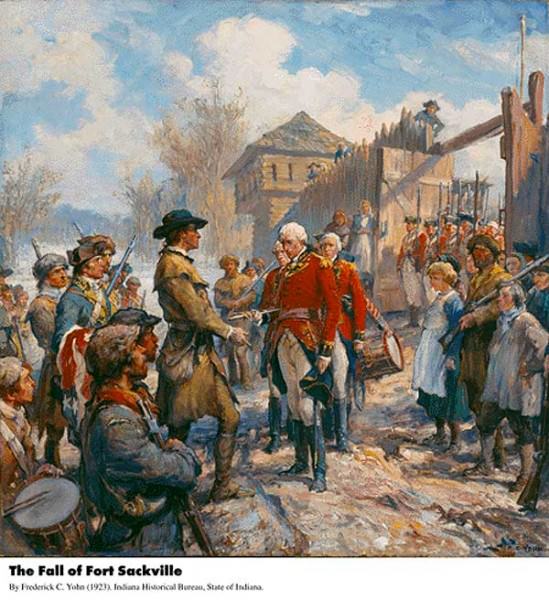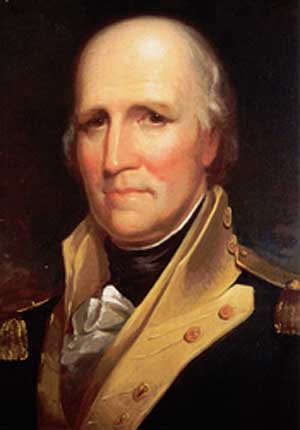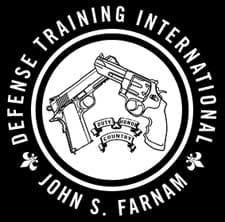By John Farnam

Ft Collins, CO –-(Ammoland.com)- “… in the event of Great Britain attempting to force unjust laws upon us by strength of arms, our Cause we leave to Heaven, and our rifles!” ~ Hanover Association, Lancaster County, PA, 1774
During the French and Indian Wars of the 1750s and 1760s, many North American Indian tribes had allied themselves with the French, against British colonists.
The French were mostly interested in trade with Indians, rather than ethnic colonies. In fact, many French explorers and traders lived with Indians, integrating with Indian culture and marrying Indian women. The frontier was subsequently liberally sprinkled with “half-breed” (French/Indian) children.
Conversely, the practice was rare among British colonists. The British were, as always, interested in real estate, establishing tax-paying colonies, colonies that ever-expanded westward! Indians naturally sided with the French, at least initially, regarding them the lesser of two threats.
So France, with the largest land army in Europe at the time, sent no troops to the New World. By contrast, England sent them by the boatload, forever altering world history!
Indians sadly discovered they had allied themselves with a loser! The British, through military force and intimidation, became the dominant force from the East Coast all the way to the Mississippi. French influence simultaneously faded.
King George III’s Proclamation of 1763 gave Indians all land west of the Appalachian Mountains for hunting grounds, a curious and utterly unenforceable edict. Colonists were supposed to keep out. Some did, but legions ignored to ruling and poured into the area.
As the American Independence Movement gained strength, culminating in the Revolutionary War, smart money was on Britain defeating the colonists and retaining control. Indians, now sided with their former hated enemy, the British, against independence-claiming colonists, once again considering the British the lesser of two threats. Once again, against all odds, they discovered they has allied themselves with a loser. It was the colonists who won!
The foregoing is why colonists of the post-revolutionary period had scant sympathy for, nor tolerance of, Indians!
The 1783 “Treaty of Paris,” which was supposed to end the Revolutionary War, didn’t! The British had no intention of observing any of its provisions, confident that newly-independent colonies would not remain united, but would quickly fall apart over regional squabbles and subsequently come groveling back to the Crown, begging for readmittance.

In order to hasten the outcome they believed to be inevitable, British military commanders who remained in western territories, paid local Indians to attack westward-expanding colonies, murdering every colonist they could find and overpower. British Colonel Henry Hamilton, from his headquarters in Detroit, thus gained the dubious nickname, “Hair-buyer.”
In an amazing and heroic military counter-move, Colonel George Rogers Clark (the “George Washington” of the Western Revolutionary Theater, and elder brother of William Clark of “Lewis and Clark” fame), at the age of twenty-seven, leading 150 frontiersman/militiamen, including Daniel Boone and Simon Kenton (called “Long-Knives” by Indians because of sabers carried by officers and some NCOs) on an unlikely and completely unexpected mid-winter attack, confronted Col Hamilton and his reduced garrison at the British Fort of Sackville (present day City of Vincennes in southern Indiana). Clark could expect scant support from hard-pressed American Revolutionary forces committed to heavy fighting back east, and he knew it!
By the time they arrived in the vicinity of the Fort on 23 Feb 1779, after a cold, difficult overland march through soggy terrain and swollen rivers, Clark’s men were weakened by hunger, utterly exhausted, and suffering from hyperthermia. A boat with additional men and supplies never arrived (it did after the fighting was over). Happily, local French settlers, who had no use for the British, provided Clark’s men with food and dry gunpowder. Gunpowder was, as today, heavily restricted by the British, so the French had to smuggle most of it in.
Clark began firing on the Fort immediately. Inside, Hamilton, concluding the noise was just some late-night celebrating by his own troops, took no action. A mid-winter attack by beleaguered Revolutionary forces was thought to be impossible. Suddenly, a bullet came through a window, wounding one of Hamilton’s men! A flabbergasted Hamilton then started desperately scurrying about in an attempt to rally his troops.
Clark built a barricade within rifle range, and firing continued all night and into the next morning.
Hamilton had a single cannon, which he was able to get into action long enough to get off at least two shots. Cannon shots they were able to get off were inaccurate and did not influence the battle. However, every time doors opened for the cannon to appear, Clark’s men fired a volley through the opening. After only a few such appearances, Hamilton’s gun crews were wiped out, and the cannon fell silent for the duration.
Clark’s men, rugged frontiersmen mostly from KY, were all, of necessity, expert marksmen. Most had rifles, which outranged muskets issued to the British. British soldiers were no match for them, and were picked-off with monotonous regularity. Return fire was largely ineffective. Hamilton could see the handwriting on the wall, but he still thought he could negotiate favorable terms for himself and his men.
Hamilton badly underestimated the degree of hatred colonists had for him and the hideous torture and murder he had condoned and encouraged for most of a decade. Neither Clark, nor his men, were in any mood to entertain Hamilton’s “conditions!”
At 9:00am on 24 February, Clark sent a message demanding Hamilton’s surrender. Hamilton declined. Firing resumed, and more of Hamilton’s men were struck down. Then, Hamilton offered a “deal.” Clark said he would accept nothing short of unconditional surrender. Hamilton responded with another “ deal.”
While this was all going on, Clark’s rear guard intercepted a band of Indians returning after a raid on colonists. Indians were taken by surprise, and most were killed. Six were captured. Two were discovered to be French and were released at the request of, and as a courtesy to, French villagers who had aided Clark’s men.
The remaining four Indians were delivered to Clark in the middle of his negotiations at the Fort. All four were lined-up, and Clark gave the order that their skulls be split-open via tomahawks, and they were, within sight of what remained of the Fort’s nervous defenders (tomahawks were preferred over sabers by most frontiersmen, believing them to be more effective and suitable to frontier fighting).
Clark then said to Hamilton, as he motioned toward the now-lifeless bodies of the four Indians:
“If you surrender unconditionally, and without delay, your lives will be spared. But, if I have to storm this fort, you will be afforded the same treatment I would render to any other murderer”
Hamilton got the hint, and surrendered immediately!
The seizure of the critical junction Sackville represented was a fatal blow to British influence in the entire “Northwest Territories” (after which Northwestern University in Evanston, IL is named).
British influence was further degraded on 20 Aug 1794 when Chief Little Turtle was defeated by Anthony Wayne at the Battle of Tippecanoe, and on 7 Nov 1811 with the defeat of Tecumseh at the Battle of Fallen Timbers. The final, fatal blow to the British was rendered by Andrew Jackson at the Battle of New Orleans on 8 Jan 1815 (just a few weeks after the Treaty of Ghent, ostensibly ending the War of 1812, had been signed).
Who are generally regarded as the last casualties of the American Revolutionary War were two British nationals accused of inciting local Seminoles. They were captured and executed (one shot, the other hanged) by Andrew Jackson in FL in 1818, forty-five years after the first shots were fired at Lexington and Concord!
George Rogers Clark died of a stroke that same year (1818), at the age of sixty-six, impoverished and dependent on relatives for support. When the War officially ended, Clark was only thirty, but the next thirty-six year of his life were filled with financial disaster and frustrating obscurity.
Henry Hamilton, despised and regarded as a war criminal by the Americans, sat in jail until 1780. After repatriation, he went on to serve in political positions in Canada, Bermuda, Dominica, and Antigua. He died (natural causes) at sixty-two in 1796.
Comment: The very existence of this nation is the result of a series of amazing, and unlikely coincidences, as we see!
Expert marksmen and surgical marksmanship have been necessary components of every one!
It is exciting to be part of the current generation!
“The Rifle is the Weapon of Democracy.” ~ Edward Paul Abbey
/John
About John Farnam & Defense Training International, Inc
As a defensive weapons and tactics instructor as well as published author, John Farnam will urge you, based on your own beliefs, to make up your mind in advance as to what you would do when faced with an imminent and unlawful lethal threat. You should, of course, also decide what preparations you should make in advance, if any. Defense Training International wants to make sure that their students fully understand the physical, legal, psychological, and societal consequences of their actions or inactions.
It is our duty to make you aware of certain unpleasant physical realities intrinsic to the Planet Earth. Mr Farnam is happy to be your counselor and advisor. Visit: www.defense-training.com


Wayne won at Fallen Timbers, William Henry Harrison at Tippecanoe.